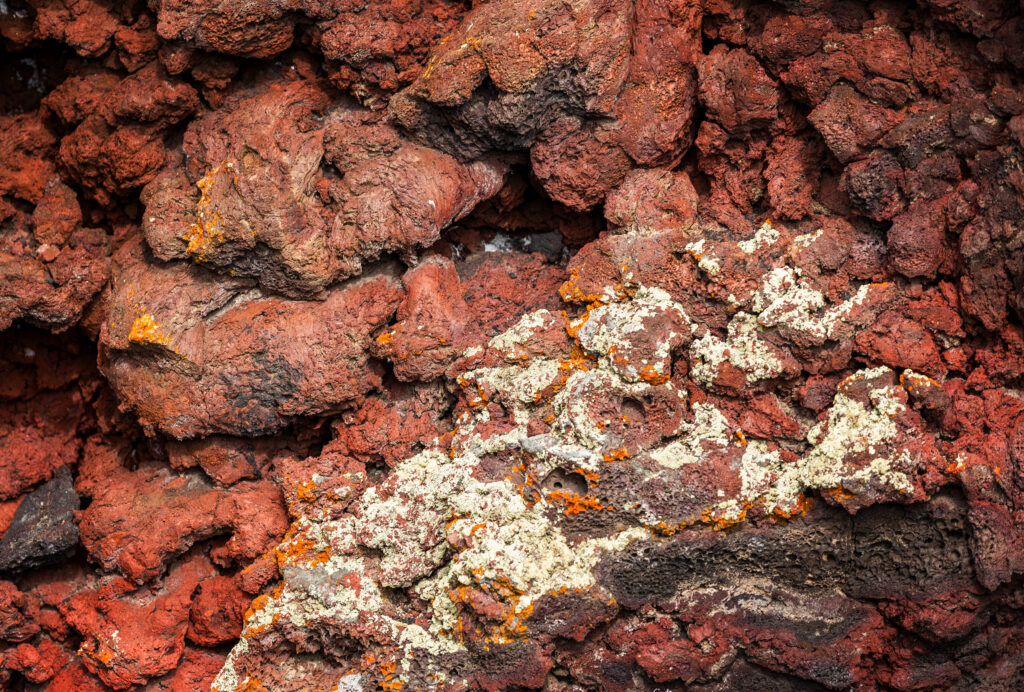Lichen can be seen on spatter cones on April 29, 2024, at Craters of the Moon National Monument and Preserve near Arco. Lichen is constantly eroding lava rocks. This is what causes the different colors to form on the spatter cones. (Pat Sutphin for the Idaho Capital Sun)
Under a hot summer sun, I hiked through the astonishing black landscape of Craters of the Moon National Monument and Preserve. Rough lava scoured the soles of my shoes as the dark mass radiated an oven of heat. It was 1986 – I had traveled to this national park in Idaho on my way across the U.S. to start graduate school in California.
Since then, published scientific field research by me and other scientists shows that human-caused climate change has damaged natural ecosystems. Yet, recent progress shows that we can cut climate change pollution and protect our national parks for the future.
What can Idaho’s Craters of the Moon tell us about climate change?
Cars, power plants, deforestation, and other human sources pump twice as much carbon dioxide into the atmosphere as forests and oceans can naturally absorb. This has increased carbon dioxide in the atmosphere to its highest level in two million years. Human activities have also increased emissions of methane (from oil and gas drilling and livestock), nitrous oxide (from fertilizers), and other polluting gases.
This pollution has intensified the greenhouse effect, increasing global temperature to its highest level in 120,000 years. Published scientific research shows that human activities have caused more than 99% of the heat of climate change, far outweighing any natural factors.
The increased heat of climate change is equivalent to burning an old 100 Watt incandescent light bulb over every square meter of the Earth, continuously, day and night.
Published research by colleagues and me shows that human-caused climate change has increased average summer temperature in Craters of the Moon National Monument one degree Celsius (1.8 degrees Fahrenheit) since 1950. While one degree might not sound like a lot, it’s the equivalent of pushing a mountain down 170 meters (550 feet), more than double the height of the Idaho State Capitol Building, from cool areas at higher elevations to hotter areas below.
In the Western U.S., scientific research shows that human-caused climate change has reduced spring snowpack in some areas to its lowest level in 800 years, doubled the area burned by wildfire above natural levels since 1984, doubled tree mortality since 1955, shifted vegetation upslope at some sites, shifted bird species northward, and eliminated the pika (a small mammal) from some sites in the Great Basin.
Research indicates that continued climate change could heat Craters of the Moon up to 5.6 degrees Celsius (10 degrees Fahrenheit) by 2100, reducing winter snow, aggravating wildfire, increasing mortality of limber pine, expanding cheatgrass, diminishing native sagebrush, and reducing sage grouse populations.
Cutting carbon pollution through energy conservation and efficiency, renewable energy, public transit, and other sustainable solutions is essential to protect nature from climate change. Colleagues and I on the Intergovernmental Panel on Climate Change found that limiting the heating of the Earth to 1.5–2 degrees Celsius (2.7–3.6 degrees Fahrenheit) above pre-industrial levels is needed to avert the most drastic consequences. This is the science basis for the Paris Agreement, in which all 194 independent nations of the world committed to that goal. This will require cutting global carbon pollution to net zero by 2050.
The National Park Service is cutting carbon pollution from its operations. Golden Gate National Recreation Area in California is a leading park in this effort. It cut greenhouse gases from electricity 95% from 2011 to 2022, through energy conservation, energy efficiency and renewable energy.
The seriousness of climate change for the health of people and nature calls each of us to do our part. Two specific actions that target major pollution sources will help. If all the cars and light trucks in the U.S. were a separate country, they would be the seventh biggest carbon polluter in the world, more than all sources in Canada and France combined. You can take meaningful action by walking, biking, or taking public transit as much as you can. I live a car-free life and encourage you to live as car-free as possible.
While cattle ranching is a major way of life in Idaho, livestock generate large amounts of methane, a greenhouse gas more damaging than carbon dioxide. Global adoption of a plant-rich, meat-free diet could cut global greenhouse gas emissions 40%. You can take meaningful action on climate change through a plant-rich, meat-free diet, as I do. Scientific research shows that the walking and plant-rich solutions also greatly benefit physical health.
Results show that these and other carbon solutions are working. The U.S. cut greenhouse gases 17% from 2005 to 2022. The European Union cut greenhouse gases 30% from 1990 to 2021. Globally, solar, wind, and other renewable energy increased 500% from 2000 to 2023, displacing the equivalent of 8000 coal-fired power plants. This progress offers hope for the future. By living more sustainably, you can help protect Craters of the Moon and all of our national parks for people to enjoy and nature to thrive.
GET THE MORNING HEADLINES DELIVERED TO YOUR INBOX

